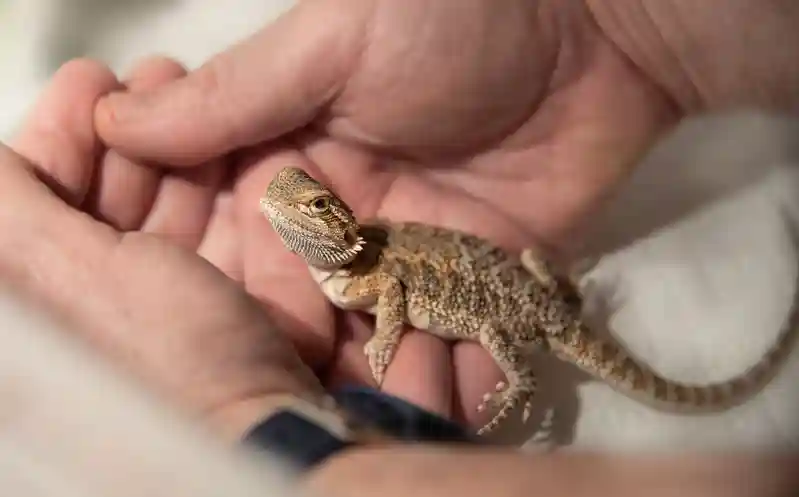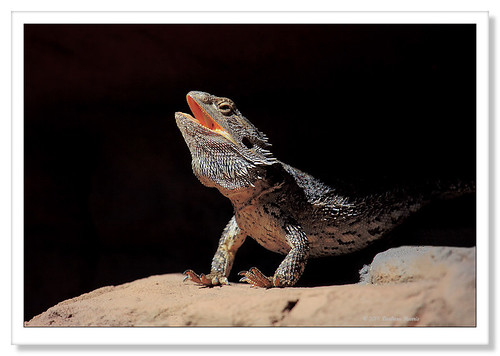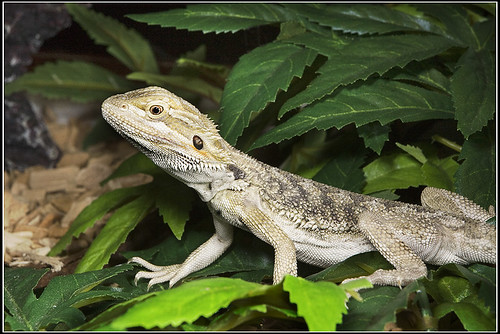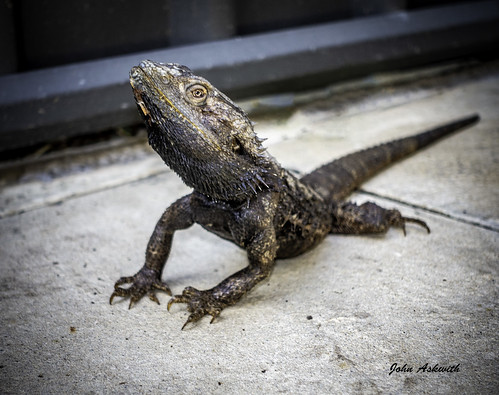A lump on a bearded dragon can indicate a number of things, including abscesses, metabolic bone disease, cysts, tumors, insect bites, or infected wounds.
It is important to identify the cause of the lump in order to determine the appropriate treatment. If you notice a lump on your bearded dragon, it is recommended to take them to a veterinarian who specializes in reptiles for a proper diagnosis and treatment plan.
Cause: Bearded dragons can develop lumps due to various causes, including abscesses, metabolic bone disease, and tumors. Abscesses are swollen infected areas within body tissue containing pus and often appear as hard tumor-like swellings. Metabolic bone disease can cause lumps due to broken bones. Tumors, such as myxosarcoma, can also cause lumps.
Diagnosis: Diagnosis typically involves a physical examination, palpation, fine needle aspiration, or surgical exploration1. In some cases, blood tests, X-rays, or ultrasound examinations may be necessary.
Treatment: Treatment depends on the cause of the lump. Abscesses are usually treated by surgical excision or lancing and flushing with an irrigation solution. Metabolic bone disease requires a visit to the vet for diagnosis and treatment. In the case of tumors, surgery and other treatments, such as strontium-90, may be attempted. It is essential to consult a veterinarian experienced with reptiles for proper diagnosis and treatment.
| Type of Lump | Cause | Treatment Options |
|---|---|---|
| Impaction | Ingestion of indigestible materials such as sand or substrate | Warm baths, fluids, and medication to help with digestion |
| Abscess | Bacterial infection due to injury, bite, or poor living conditions | Antibiotics, drainage, or surgical removal |
| Benign Tumor | Abnormal, non-cancerous cell growth | Monitoring or surgical removal if necessary |
| Malignant Tumor | Abnormal, cancerous cell growth | Surgical removal, chemotherapy, or radiation therapy |
| Parasite-induced Lumps | Infestation by mites or ticks | Reptile-safe mite spray, medication, or manual removal of parasites |
Symptoms of Lumps in Bearded Dragons
Aside from the visible lump itself, additional symptoms may include:
- Lethargy or decreased activity
- Loss of appetite
- Changes in behavior
- Swelling or redness around the lump
- Discharge or pus from the lump
Causes of Bearded Dragon Lumps
There are several possible causes of lumps in bearded dragons. It is essential to determine the underlying cause to provide the correct treatment. Here are some of the most common causes of bearded dragon lumps:
1. Abscess
An abscess is a pocket of pus that can form under the skin, usually caused by bacterial infections. Bearded dragons with abscesses may have a lump that is swollen, painful, and warm to the touch. The lump may also have a white or yellowish discharge.
Treatment for abscesses usually involves draining the pus and prescribing antibiotics to prevent further infections.
2. Cysts
Cysts are fluid-filled sacs that can form under the skin. They are usually harmless and can disappear on their own. However, if a cyst becomes infected, it can turn into an abscess.
Small cysts that are not causing any discomfort may not require treatment. If a cyst becomes infected, it may require drainage and antibiotics.
3. Tumor
Tumors are abnormal growths that can be benign (non-cancerous) or malignant (cancerous). Bearded dragons with tumors may have a lump that is hard, non-painful, and does not move.
If a tumor is cancerous, surgery may be required to remove it completely. If the tumor is not cancerous, your veterinarian may recommend monitoring it and only removing it if it causes discomfort to your bearded dragon.
4. Foreign Body
Bearded dragons may accidentally ingest foreign objects that can cause lumps in their digestive tract. These objects can cause blockages that can lead to more serious health problems if left untreated.
If a foreign object is causing a blockage in your bearded dragon’s digestive tract, surgery may be required to remove it.
5. Parasites
Bearded dragons can also develop lumps due to the presence of parasites such as mites, ticks, or worms. These lumps may be accompanied by other symptoms such as lethargy, loss of appetite, and weight loss.
Treatment for parasites usually involves administering medication to eliminate the infestation.
Diagnosing Bearded Dragon Lumps
If you notice a lump on your bearded dragon, it is essential to seek veterinary care to determine the underlying cause. A veterinarian will perform a physical examination and possibly order diagnostic tests such as X-rays or ultrasounds to get a better understanding of the lump’s size, location, and composition.
It is important to note that not all lumps require immediate medical attention. For example, a small cyst that is not causing any discomfort to your bearded dragon may not require treatment. However, it is always best to err on the side of caution and consult with a veterinarian.
Home Remedies
For minor lumps caused by parasites or mild impaction, some home remedies may help. Removing parasites with a reptile-safe mite spray or providing a warm bath to help with impaction can alleviate the issue. However, these remedies should only be used for mild cases, and it’s essential to consult a veterinarian if the lump persists or worsens.
Veterinary Intervention
For more severe cases or when the cause of the lump is unknown, veterinary intervention is necessary. Depending on the diagnosis, treatment options may include:
- Antibiotics for bacterial infections or abscesses
- Surgical removal of tumors or large abscesses
- Medication to treat parasites
- Supportive care for impacted bearded dragons, such as fluids and medication
Preventing Bearded Dragon Lumps
To minimize the risk of bearded dragon lumps, follow these preventative measures:
Proper Diet and Hydration
Feeding your bearded dragon a well-balanced diet and ensuring they have access to fresh water can help prevent impaction and maintain overall health.
Regular Cleaning and Maintenance
Keeping your bearded dragon’s enclosure clean and free of debris can reduce the risk of bacterial infections and parasites.
Monitoring Health and Behavior
Regularly observe your bearded dragon for any changes in their health or behavior, as early detection of problems can lead to more effective treatment.
FAQs
How can I tell if my bearded dragon has a lump?
Lumps can be visible on your bearded dragon’s body, and they may be soft or firm to the touch. Look for additional symptoms such as lethargy, loss of appetite, or changes in behavior.
Are all bearded dragon lumps dangerous?
Not all bearded dragon lumps are dangerous, but it’s essential to consult a veterinarian if you notice a persistent or worsening lump to determine the cause and receive appropriate treatment.
How can I prevent my bearded dragon from developing lumps?
To prevent lumps, ensure your bearded dragon has a well-balanced diet, clean living environment, and monitor their health and behavior regularly.
Can bearded dragons develop cancerous tumors?
Yes, bearded dragons can develop malignant (cancerous) tumors, which require immediate treatment.
How is a bearded dragon lump diagnosed?
A qualified reptile veterinarian can diagnose a bearded dragon lump through a physical examination, blood work, imaging tests, and, in some cases, a biopsy.
Conclusion
Bearded dragon lumps can be a cause for concern, but they can also be easily treated if diagnosed properly. If you notice a lump on your bearded dragon, it is important to seek veterinary care to determine the underlying cause and treatment options.
Remember that prevention is always better than cure, so proper husbandry practices such as providing a clean and safe environment, feeding a balanced diet, and regularly cleaning your bearded dragon’s enclosure can help prevent health problems from occurring.




Leave a Reply